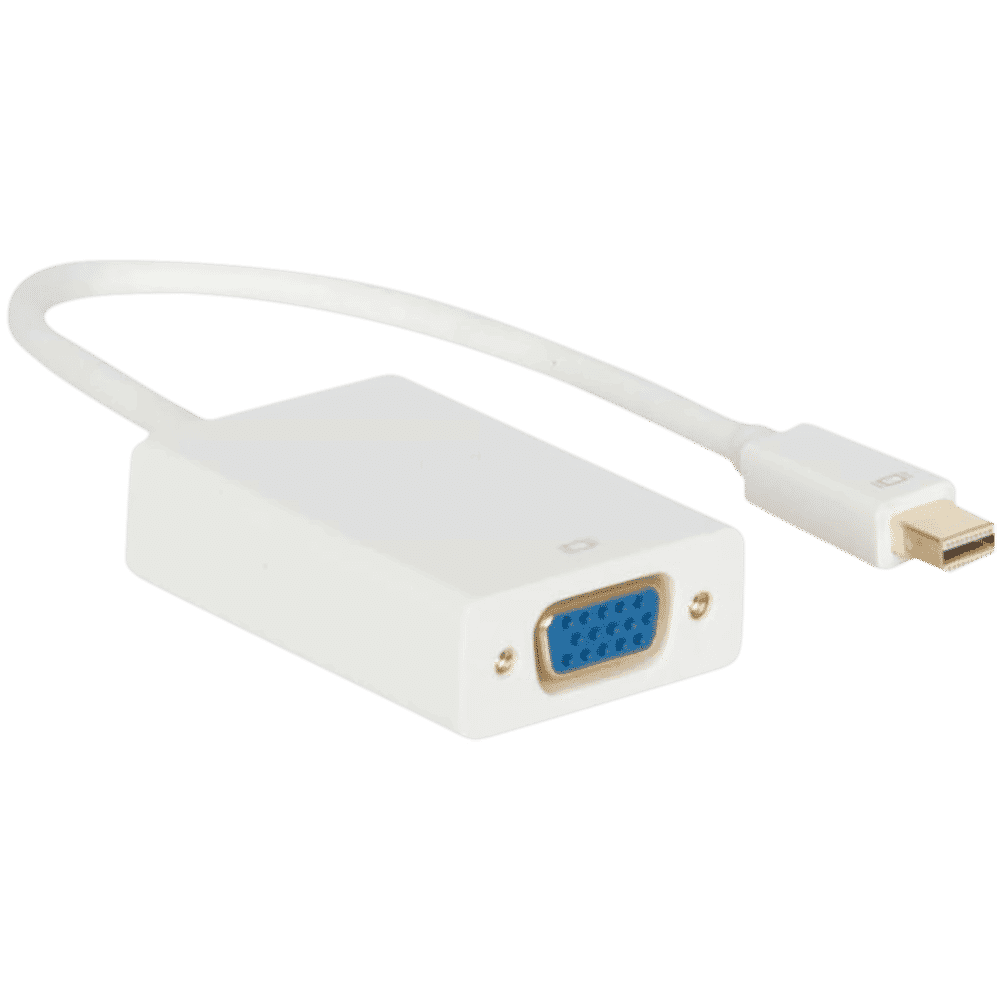%20(Presentation)%20(1600%20x%20600%20px)(488)-54cd96ce-d69e-4ac7-914f-ae436fcee76d.webp&w=3840&q=75)
Consumer Electronics
•03 min read

Buy ultraprolink Mini Display Port to VGA Port Adapter (1000 Mbps Speed, White) online at best prices from Croma. Check product details, reviews & more. Shop now!
Imagine doubling your productivity or enhancing your visual experience simply by adding a second monitor to your laptop. In today’s fast-paced digital world, increasing your workspace can transform the way you work, play, and communicate. Upgrade your workspace with confidence by shopping on Tata Neu, where every tech accessory purchase helps you earn NeuCoins and enjoy same-day express delivery for orders placed before 6PM. With this checklist, you'll learn how to connect dual monitors to your laptop effectively, troubleshoot common issues, and optimise your setup for a seamless experience.
Before diving into your dual monitor setup, it is essential to assess your laptop’s compatibility. Begin by checking the type of ports available on your laptop such as HDMI, DisplayPort, USB-C, or even VGA. Confirm that your laptop’s graphics card supports multiple displays and note the number of external monitors it can handle. Always check your device manufacturer’s website for the latest port specifications and driver updates to ensure compatibility.
Gather the necessary equipment. You will need monitors with compatible ports, the correct cables—whether it’s HDMI, DisplayPort, USB-C, or VGA—and possibly additional accessories like dual monitor adapters, docking stations, or HDMI splitters. Additionally, consider how you want to use your displays: will you extend your laptop’s screen to create additional workspace or mirror your display for consistent images across screens? Decide on your preferred layout, whether landscape or portrait.
Start by connecting your first monitor using the primary port on your laptop, typically an HDMI connection. For the second monitor, use an alternative port or the required adapter. If your laptop only has one HDMI port, accessories like an HDMI splitter or a docking station become indispensable. These solutions help connect laptop to multiple screens without compromising on functionality.
For Windows 10/11 users, right-click on the desktop and select Display Settings. Here, you can detect and arrange displays. Choose between extending your laptop display to two monitors or duplicating the content based on your specific needs. MacOS users can similarly open System Preferences, navigate to Displays, and arrange their screens to ensure a smooth laptop dual screen configuration.
Once your monitors are connected, adjust the display settings for each monitor to set the resolution and refresh rate that best suit your needs. Customise the orientation and scale to ensure clarity and reduce eye strain. Ergonomically arranging your workspace plays a crucial role in minimising physical strain. Consider using monitor stands or mounts to ensure proper alignment and a comfortable viewing angle.
Maintaining a tidy setup is simpler with cable organisers. Neatly managing cables not only prevents clutter but also protects against accidental disconnections. Always ensure that both monitors are powered properly and that every connection is secure. Whether you are setting up a dual monitor adapter for laptop or connecting external monitors with various ports, careful arrangement and cable management will enhance your overall experience.
If your laptop does not recognise a second monitor, start by checking all cable connections and available ports. Updating your graphics drivers is also recommended to ensure compatibility and smooth performance. A simple restart of your laptop and monitors can often resolve temporary issues.
Should you encounter display problems such as flickering or distorted images, adjusting the refresh rate or the resolution via the display settings may solve the issue. If you continue to face hardware limitations, consider using a docking station or investing in an external GPU for additional monitor support. This strategic approach ensures that you can truly maximise the potential of your dual monitor setup for laptop.
For those keen on a streamlined dual monitor setup for laptop, leveraging dual monitor adapters and docking stations is a game-changer. These devices simplify connections and often include additional ports to connect peripherals. Regularly updating your graphics and monitor drivers is vital to maintaining optimal performance. Use manufacturer-specific software when available for the best configuration experience.
Enhance your workflow by exploring keyboard shortcuts to switch between monitors or to quickly snap windows into place. There are also multi-monitor software tools available that offer advanced customisation features. By incorporating these tips into your routine, you can achieve a truly seamless multiple monitors with laptop experience that is both efficient and enjoyable.
Pro Tip: For a seamless dual monitor setup, invest in a quality docking station or dual monitor adapter. These devices not only simplify connections but also allow for additional ports to connect peripherals, enhancing your overall productivity.
Yes, most modern laptops support dual monitor setups. You may need an adapter, docking station, or splitter depending on the available ports.
Ensure both monitors are properly connected. Then, go to your laptop’s display settings, click on Detect, and arrange the monitors as needed.
Use an HDMI splitter, docking station, or a USB-C to HDMI adapter to connect multiple monitors to a single HDMI port.
You can use a docking station or an external GPU to add more ports for connecting multiple screens.
Yes, you can mix and match monitors, but ensure they support similar resolutions and refresh rates for a consistent visual experience.
By following this essential checklist, setting up dual monitors to enhance your laptop’s capabilities becomes a straightforward and rewarding process. Whether your goal is to boost productivity, create immersive gaming sessions, or simply enjoy a larger digital workspace, careful planning and a thoughtful setup will lead to a more efficient and enjoyable experience. Shop on Tata Neu to earn NeuCoins and enjoy express delivery, ensuring you get the most out of your laptop dual screen configuration while enjoying all the benefits of a well-organised, clutter-free workspace.